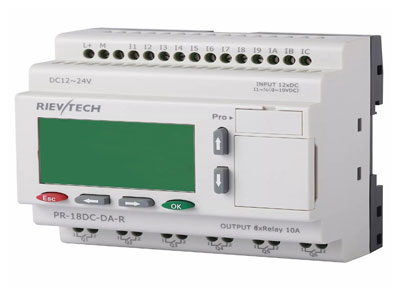What Is The Difference Between Plc And Microcontroller?
Key Takeaway
A PLC (Programmable Logic Controller) is designed for industrial automation, providing robust, reliable control in harsh environments. It includes housing and mounting equipment for easy connection to external devices. A microcontroller, on the other hand, is a compact, single-chip computer used for specific tasks in embedded systems. It typically comes as a simple board with connection pins and requires additional components for functionality. PLCs are preferred for complex automation tasks with multiple inputs and outputs, while microcontrollers are ideal for simple, dedicated applications.
Overview of PLCs and Microcontrollers
PLCs (Programmable Logic Controllers) and microcontrollers are both widely used in industrial automation and control systems, but they serve different purposes and have distinct characteristics. PLCs are specialized computers designed for controlling industrial processes and machinery. They are rugged, reliable, and capable of handling multiple input and output devices. On the other hand, microcontrollers are single-chip computers used in a wide range of applications, including consumer electronics, automotive systems, and embedded systems. They are more versatile and customizable than PLCs but may require additional programming and integration efforts in industrial settings.

Key Differences in Architecture and Functionality
The architectural and functional disparities between PLCs and microcontrollers are pivotal in understanding their distinct roles in industrial automation and control systems. PLCs, characterized by a modular framework, encompass specialized input/output modules, a central processing unit (CPU), and memory designated for program logic storage. Engineered for real-time control tasks, PLCs incorporate features for seamless monitoring and diagnostics. Conversely, microcontrollers integrate the CPU, memory, and input/output peripherals onto a single chip, endowing them with exceptional versatility. They possess the capability to execute a diverse array of tasks through programming. However, microcontrollers typically lack the robustness and reliability crucial for industrial environments, a hallmark feature of PLCs. This differentiation underscores the trade-offs between the two systems, with PLCs offering steadfast performance tailored to industrial settings, while microcontrollers present flexibility at the expense of ruggedness. Understanding these variances empowers engineers to make informed decisions when selecting the most suitable control system for their specific requirements.
Application Scenarios for PLCs and Microcontrollers
PLCs and microcontrollers cater to distinct application scenarios based on their inherent characteristics and capabilities. PLCs serve as stalwarts in industrial automation settings, where reliability, ruggedness, and real-time control are paramount. They thrive in environments characterized by harsh conditions, such as manufacturing plants, power generation facilities, and transportation systems. Their robust construction and specialized features make them indispensable for ensuring uninterrupted operation and precise control in these demanding environments.
Conversely, microcontrollers find widespread use across a diverse spectrum of industries and applications. Their versatility and adaptability make them well-suited for tasks that demand flexibility, customization, and cost-effectiveness. Microcontrollers are commonly employed in consumer electronics, where they power devices ranging from smartphones and smart appliances to wearable gadgets. Moreover, they play a vital role in medical devices, facilitating intricate functionalities in diagnostic equipment and patient monitoring systems. Additionally, microcontrollers are instrumental in home automation systems, enabling homeowners to automate various tasks and enhance convenience and energy efficiency.
Understanding the distinct application scenarios for PLCs and microcontrollers empowers engineers to make informed decisions when selecting the appropriate control system for their specific needs, ensuring optimal performance and efficiency in their projects.
Pros and Cons of Each System
PLCs and microcontrollers each have their own set of advantages and drawbacks, which engineers must consider when selecting the appropriate control system for their applications. PLCs offer ruggedness, reliability, and ease of programming using graphical languages like ladder logic. They boast scalability, allowing for easy expansion with additional modules, yet they can be pricier than microcontrollers and may lack the processing power for complex calculations.
Conversely, microcontrollers are highly versatile and cost-effective, providing greater flexibility in programming and capable of executing complex tasks with the right software. However, they may necessitate more development time and expertise to implement in industrial settings, and they may not match the robustness of PLCs in harsh environments.
Understanding these pros and cons empowers engineers to make informed decisions based on the specific requirements and constraints of their projects, ensuring optimal performance and cost-effectiveness in their control system designs.
Decision-Making Criteria for Choosing Between PLC and Microcontroller
When faced with the decision between utilizing a PLC or a microcontroller, engineers must assess various factors to make an informed choice tailored to their specific needs. Firstly, they should thoroughly understand the application’s requirements, considering factors such as the complexity of control tasks, the need for real-time operation, and the desired level of reliability. Additionally, the level of customization required plays a crucial role; while PLCs offer standardized solutions suitable for many industrial applications, microcontrollers provide greater flexibility for highly customized systems.
Moreover, environmental conditions must be taken into account, as PLCs are renowned for their ruggedness and suitability for harsh industrial environments, whereas microcontrollers may require additional protective measures in such settings. Finally, budget considerations are paramount, with PLCs typically being more expensive upfront but potentially offering long-term cost savings through their robustness and ease of maintenance. By carefully weighing these criteria, engineers can make the most appropriate choice between PLCs and microcontrollers for their particular application, ensuring optimal performance and cost-effectiveness.
Conclusion
In conclusion, both PLCs and microcontrollers have their advantages and disadvantages, and the choice between them depends on the specific requirements of the application. By carefully evaluating the key differences in architecture, functionality, and application scenarios, engineers can make informed decisions when selecting the right control system for their needs. Whether it’s optimizing industrial processes, automating home appliances, or developing innovative consumer products, choosing the right control system is essential for achieving optimal performance and efficiency.
